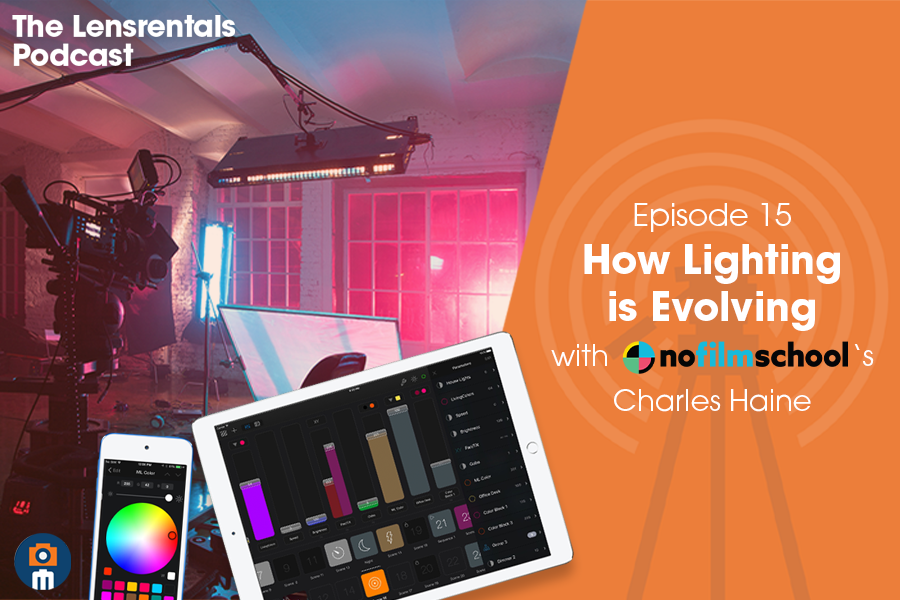Podcast Episode
The Lensrentals Podcast Episode #15 – How Lighting is Evolving with NoFilmSchool’s Charles Haine

Each week Roger Cicala, founder of Lensrentals.com, hosts conversations about the art and science of capturing images. From photography to videography, film, history, and technology, the show covers a wide range of topics to educate and inspire creators of all kinds.
How Lighting is Evolving with NoFilmSchool’s Charles Haine
Charles Haine is the Acting Director of the Feirstein Graduate School of Cinema at Brooklyn College and writes for NoFilmSchool.com. Charles joins Ryan and discusses how consumers can help shape the future of sustainable lighting, apps with UX/UI worth your time, and certain lighting apps he considers to be “total screaming garbage.”
Charles has been a filmmaker and entrepreneur working in the motion picture industry since 1999, founded the Academy Award nominated production company Dirty Robber in 2008 and was part of the inception of Cinleicious.tv. He also hosts the “Week In Film Tech” podcast, and co-hosts the “NoFilmSchool” podcast.
Mentioned in the episode:
Luminair 3
Stellar
LumenRadio MoonLite Wireless CRMX DMX Transceiver with Bluetooth
Review of the Hive App by Charles Haine
No Film School Podcast
Week in Film Tech Podcast
Follow Charles on Twitter
Timestamps
0:25 – Ryan Hill introduces us to Charles Haine, the Acting Director of the Feirstein Graduate School of Cinema at Brooklyn College
1:00 – Charles tells us what he looks for when using light for video productions
3:00 – Charles and Ryan discuss the variety of lighting systems and what to look for in the spec sheet
4:00 – Talking about the atmospheric impact of using these large light systems
7:00 – Weighing the pros and cons of LED vs. Tungsten
9:00 – Charles laments about how no one uses DMX boards, despite their value
12:00 – How each brand has their own individual plan for their apps and lighting effects
15:00 – How Charles wishes that Luminair would become the industry standard for lighting apps
17:30 – How digital recording and the use of color-calibrated monitors has changed the lighting techniques used on film productions
19:30 – Discussing the technicalities and limitations of wireless DMX and Bluetooth
25:00 – Charles talks about how he believes wireless lighting control is going to become the industry standard in the next few years
27:00 – BREAK
27:45 – What features to look for within a lighting app
31:00 – Ryan and Charles throw a few brands under the bus for their poor app development
The Lensrentals Podcast is a production of Lensrentals, founded by Roger Cicala. Our production staff includes Drew Cicala, Ryan Hill, Sarah McAlexander, SJ Smith, Julian Harper, John Tucker, and Zach Sutton. Other contributors include Roger Cicala, Joey Miller, Ally Aycock Patterson, Joshua Richardson, and Philip Robertson.
Thanks to Jacques Granger for our theme song.
Submit a topic idea, question, or comment, leave us a voicemail at 901-609-LENS, or send us an email at podcast@lensrentals.com.
Facebook
YouTube
Instagram
TikTok
Twitter
Pinterest
Author: Lensrentals
Articles written by the entire editorial and technical staff at LensRentals.com. These articles are for when there is more than one author for the entire post, and are written as a community effort.
-
Andre Yew
-
Ryan Hill
-
Andre Yew




